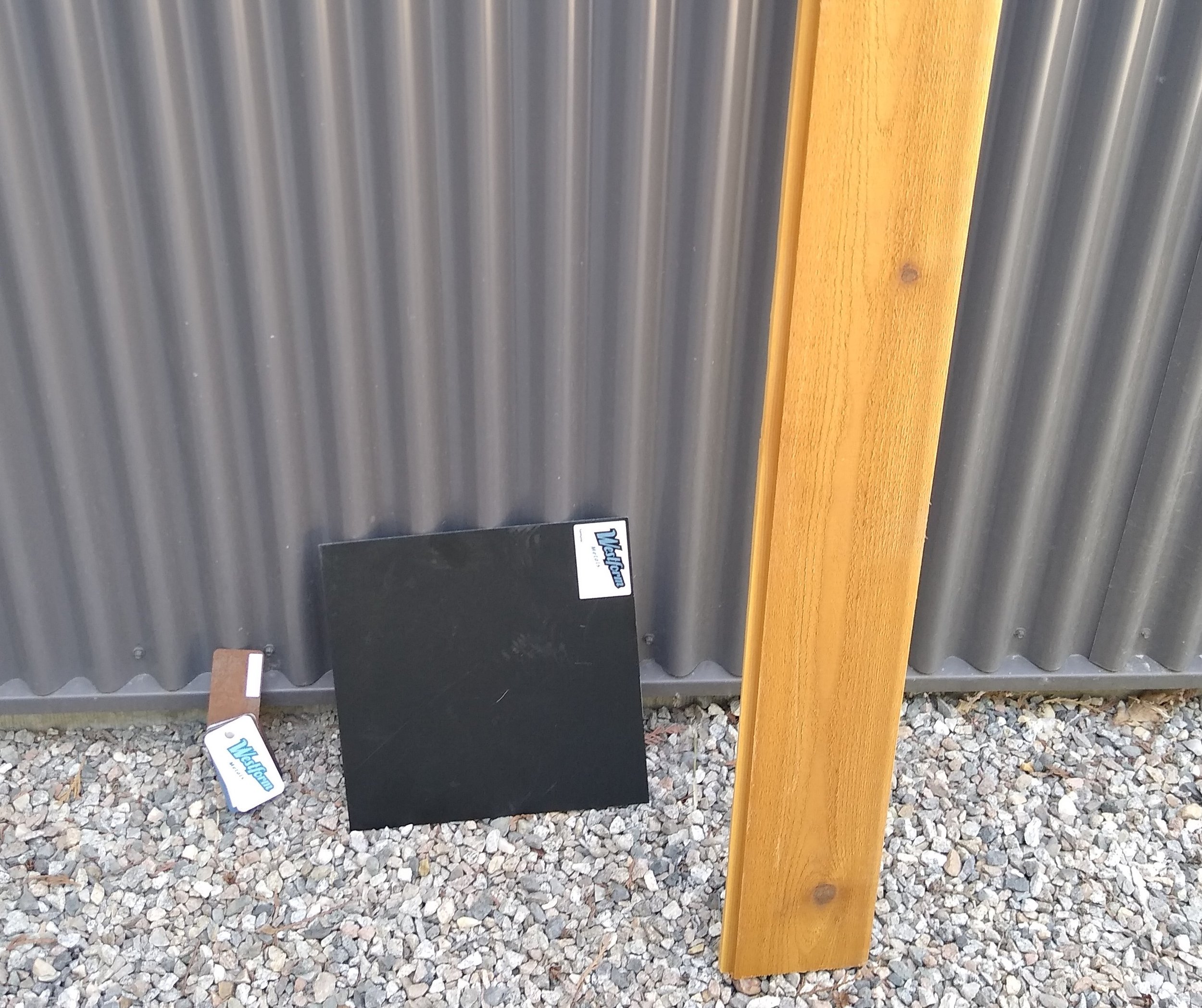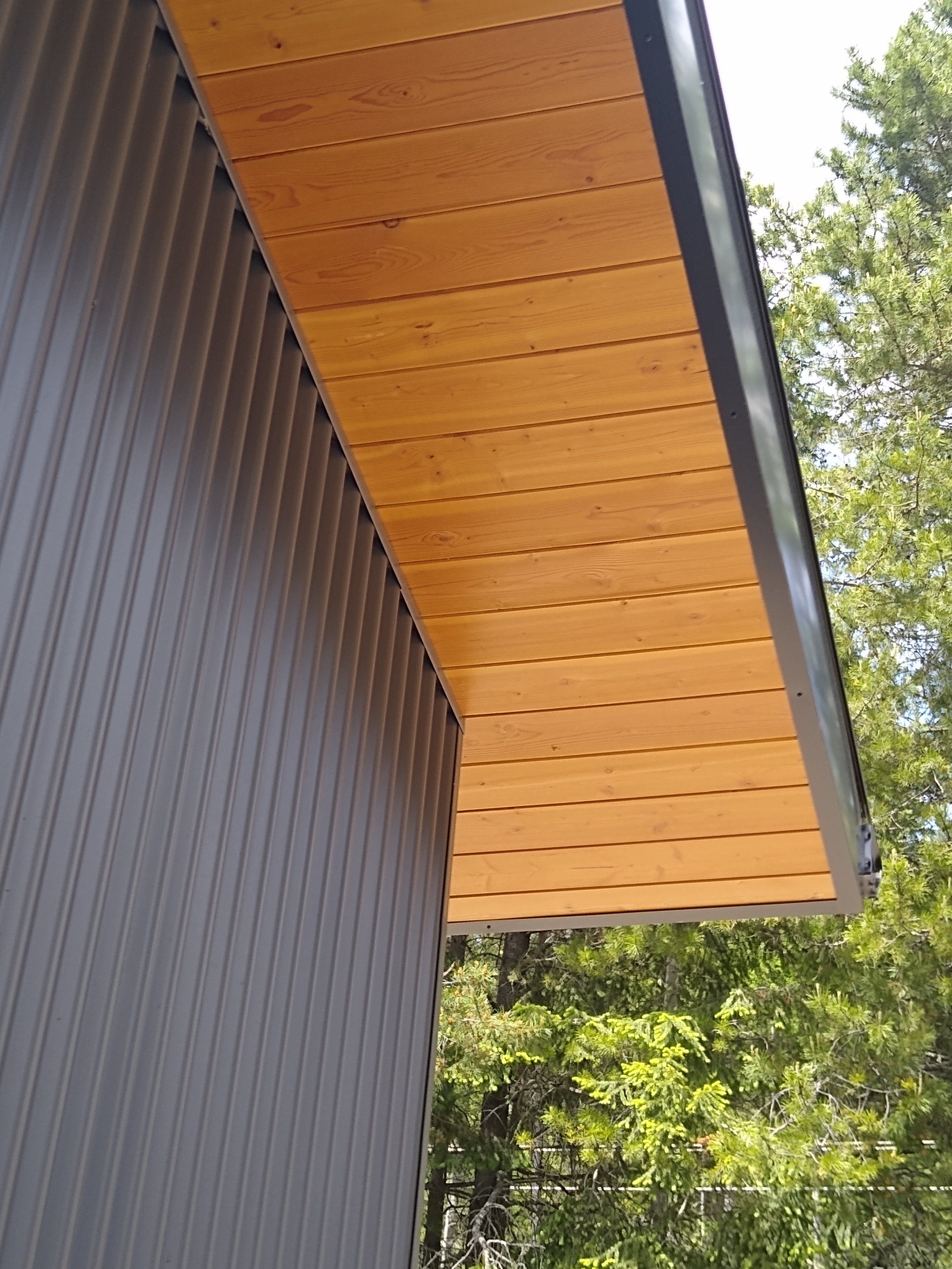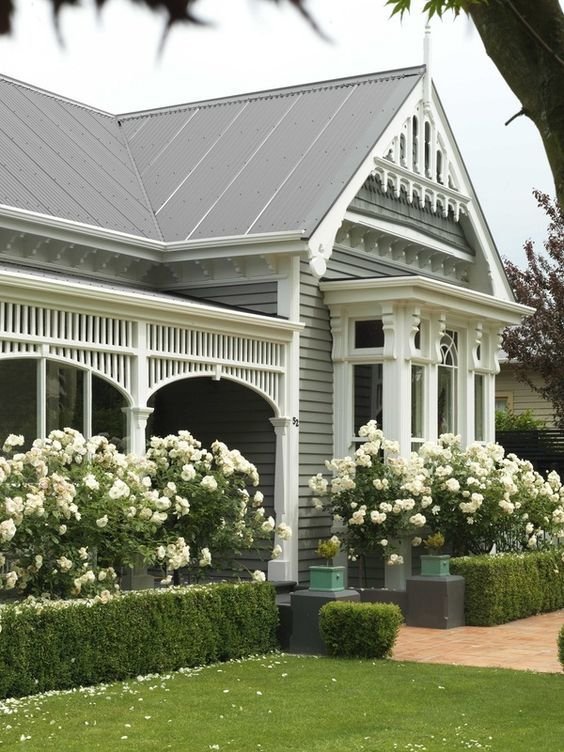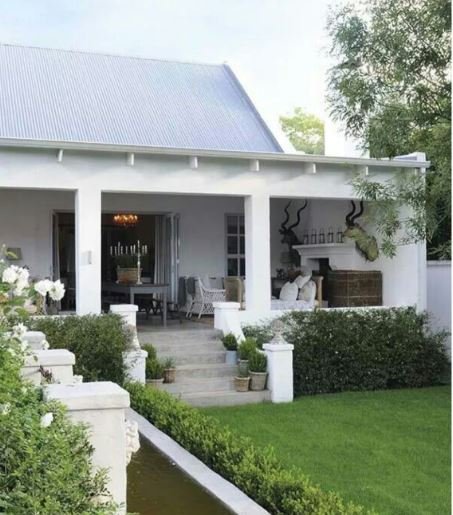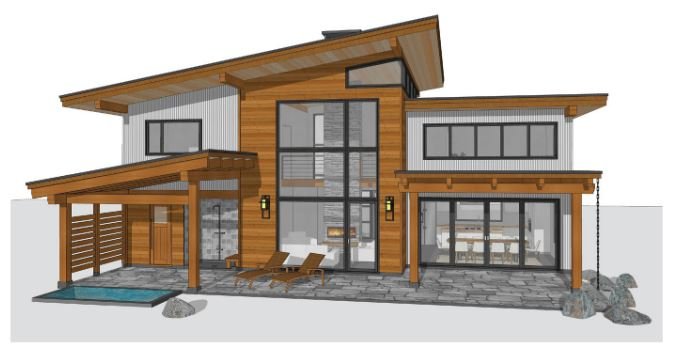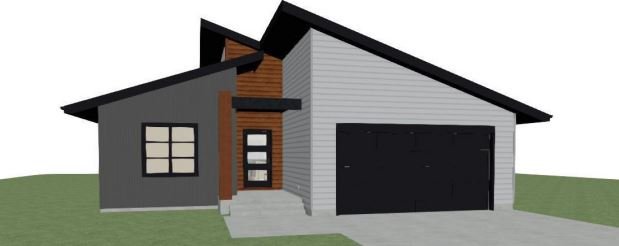Kootenay Contemporary building style
In recent years the Kootenay region has seen a new building style emerge, especially for new homes. As a designer here in Nelson BC, clients have asked me numerous times about this style of architecture and it occurred to me that style doesn’t seem to have an official name yet! So what is the name of the black (or shades of charcoal) metal and natural cedar finished homes which are popping up all over the Kootenays? I have coined it the Kootenay Contemporary style. I also thought of the terms ‘Mountain” but then a lot of these homes are built along our beautiful lakes and I tried to steer away from the term ‘Modern’ as it does really refer to the 1930s - 60s modern period. A couple of home builders have used the term ‘Modern Mountain’ which seems to include some river stone in the designs- but it doesn’t appear to be regional term adopted by the architects and builders communities as such. So Kootenay Contemporary it is!
What is the Kootenay Contemporary architectural style?
What you will notice with this Kootenay building style is that the most common building material used in new builds on the local lakes and wooded areas seem to be a combination of corrugated sheet metal and wood. The corrugated or other metal is generally used as cladding in a vertical pattern and the window frames and door frames are generally black.
The most popular type of wood is cedar which is a great exterior choice because of its natural resistance to moisture, decay and insect infestations. It is generally a wood with an orange tone, but can also be stained. Douglas fir is used quite often too because of its structural stability. Sometimes these materials are complimented by the ever popular Hardie plank, stucco and some stone features. The cedar wood is commonly used as ‘accent’ wall panels, beam and posts, around porches, front door and garages and also as the preferred material for soffits.
The entire look creates an industrial vibe and so this design style has also been adopted for commercial buildings in the area, popular with coffee shops and breweries.
So where does the contemporary corrugated iron trend come from?
Seeing the corrugated metal trend arrive here in Canada reminds me of growing up in South Africa and also living in Australia. In both these countries these building materials have been used for over 150 years. Corrugated iron was first invented in Britain in 1829 and made its way to the hot Southern Hemisphere colonies. These iron sheets soon became very popular as they were strong, durable and weathered well in addition to being pretty much fire proof. The most common use was for roofing, these were called “tin roofs” and created a true pioneer and heritage feel to homes. Another popular use of the iron sheets was on the roofs or wraparound verandas or ‘stoeps’ to keep the sun off. It is also the preferred material for farm buildings in both countries. To a lesser extent this style is also seen in New Zealand, India and Chile.
Going from a roof material to cladding - a modern shift
The undulating nature of corrugated metal brings texture, contrast and forever changing shadows during the day as the sun moves along its arc. So it was only natural to start using this for cladding as well as roofing. Quite unexpectedly it has changed from a heritage look to a very contemporary style, by simply placing it vertically! The most common orientation is vertical, but occasionally it is also installed horizontally or as a combination of both. The shift from the silvery roof sheets to a more grey, charcoal and black colour palette gives it that modern look. In all these instances it also creates an added benefit in that it is pretty fireproof, great news for areas where summer bush and forest fires are common.
“By simply using the corrugated iron vertically as cladding and painting it black, it has quite unexpectedly changed from a heritage look to a very contemporary style.”
What are the similarities between Kootenay Contemporary and West Coast Contemporary designs?
Both styles also incorporate natural materials such as wood, stone, and glass. These materials are used both inside and outside the home, creating a seamless flow between the two spaces. Open plan concepts and large windows are quite common - the Kootenay windows are not as expansive due to our colder winters here but both styles embrace the beautiful surroundings and aim to bring the outside in.
Creating interiors to tie into the architecture
So much goes into creating a home’ and tying in elements from both the interior and exterior brings a feeling of harmony. As a designer we look for elements, colours and textures we can repeat - that is why talking to both your architect and designer at the beginning of a project is so important. As designers we want you to have your best home set in the architectural dream your architect has envisioned.
Will this trend stay?
My guess is yes, but hopefully we will see less solid black and more wooden and stone accents to provide balance. There are some homes in the area where this look has been taken to the extreme - black cladding, asphalt driveways, black planters and not enough wood accents or other neutral colours to create some interest. I am predicting home owners will get tired of this look quite quickly, so it might evolve gradually over time to incorporate a bit more texture and colour. By colour I mean the beautiful natural neutrals found in natural products such as stone accents, stone pavers, clay planters etc.
How to get this look right in your interiors!
Having this contemporary exterior look doesn’t mean you have to have a monochromatic interior - Pinterest and Instagram are currently trending with repetitive and blah neutral and black interiors. I love this style and having neutral and black lighting, faucets and hardware are great base but don’t be shy to use some colour here and there too.
So which colours work well with this style? Go for blues and greens, and if there is one colour that doesn’t work so well with these black and cedar homes it is red. Save the red for your cottage on the lake!
Thinking of building in the Kootenays? If you are currently thinking of renovating or building a new home in this style, you might not realise that there are lot of design elements to consider. If you want to create the right balance in creating a Kootenay home which is both contemporary and warm, then get in touch!
Photos used in this blog: Purcell Timber Frame Homes in Nelson and New Dawn Developments in Cranbrook, Image on blog cover from Built Prefab in Kelowna.
